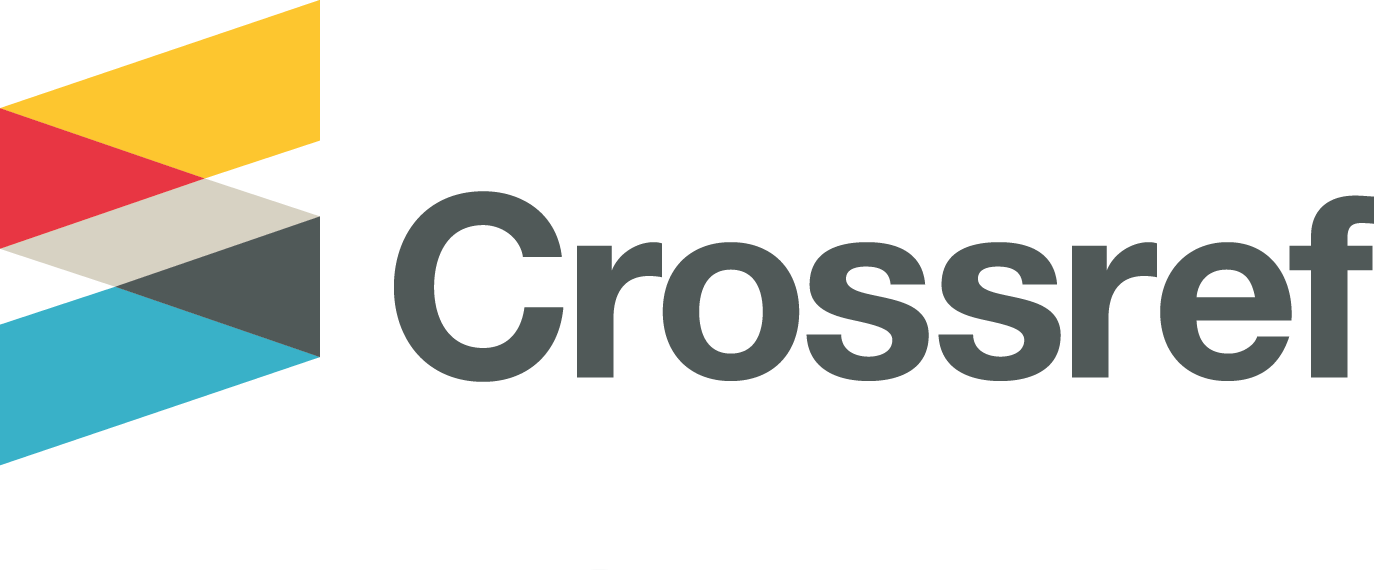'Go Crowded' Advertising Strategy: Increase Travel Agency Intent, Recommendations, and Engagement
Abstract
Iklan berperan penting dalam membentuk niat dan keterlibatan konsumen, termasuk dalam industri biro perjalanan. Kampanye "Pergi Rame-Rame" dirancang untuk menarik minat calon pelanggan di Malang dengan menekankan nilai kebersamaan dalam bepergian. Penelitian ini menganalisis pengaruh iklan terhadap niat, rekomendasi, dan keterlibatan calon konsumen. Pendekatan kuantitatif dengan metode survei eksperimental digunakan untuk mengukur dampak intervensi iklan terhadap variabel dependen. Responden terdiri dari 320 calon pelanggan yang diberikan paparan iklan, kemudian dianalisis perubahan dalam niat dan keterlibatan mereka terhadap biro perjalanan. Hasil penelitian menunjukkan bahwa iklan kreatif dan relevan secara budaya meningkatkan niat pelanggan, mendorong rekomendasi, dan memperkuat keterlibatan mereka dengan biro perjalanan. sebelum intervensi tidak ada perbedaan signifikan antara kedua kelompok, namun setelah intervensi, kelompok yang diberi Digital Content Marketing menunjukkan peningkatan signifikan dalam intention, recommendation, dan engagement dibandingkan dengan kelompok kontrol. Implikasi temuan ini menegaskan bahwa biro perjalanan perlu menyusun strategi pemasaran berbasis budaya yang lebih informatif dan menarik secara visual untuk menarik lebih banyak pelanggan. Menyertakan testimoni pelanggan dan promosi interaktif dapat memperkuat daya tarik iklan. Penelitian ini berkontribusi pada pemahaman efektivitas iklan hiper-lokal dalam memengaruhi perilaku konsumen serta memberikan wawasan bagi pengembangan kampanye pemasaran yang lebih strategis dan berbasis nilai sosial.
Keywords
Full Text:
FULL TEXTReferences
Ajzen, I. (1991). The theory of planned behavior. Organizational Behavior and Human Decision Processes. Organizational Behavior and Human Decision Processes, 50(2), 179–211.
Alon, I., Lee, K., & Lee, K. (2019). Pre-test Engagement Scores and Randomization: An Empirical Study. Journal of Marketing Research, 56(1), 85–101.
Anderson, J. (1998). Customer Satisfaction and Word-of-Mouth: A Review of the Literature. Journal of Service Research, 5(2), 159–168.
Brodie, R., Hollebeek, L., Jurić, B., & Ilić, A. (2011). Brodie, R. Journal of Business Research, 64(7), 1058–1065.
Brown, J., Broderick, A., & Lee, N. (2007). Word of mouth communication within online communities: Conceptualizing the online social network. Journal of Interactive Marketing, 21(3), 2–20.
Brown, J., Clark, L., & Evans, M. (2019). Evaluating Randomization Effects on Pre-test Recommendations. Marketing Science, 33(4), 678–692.
Brown, T., Pope, N., & Voges, K. (2009). The role of engagement in advertising effectiveness. Journal of Advertising, 38(1), 53–64.
Campbell, D., & Stanley, J. (2015). Experimental and quasi-experimental designs for research (1st ed., Vol. 1).
Carter, S., & Yao, X. (2020). Advertising effectiveness and customer engagement: A comprehensive review. Journal of Advertising Research, 60(2), 145–161.
Chandon, P., Chandon, P., & Reinartz, W. (2009). Do Intentions Really Predict Behavior? Self-Generated Validity Effects in Survey Research. Journal of Marketing, 73(2), 49–69.
Chen, L., Zhang, W., & Zhang, W. (2020). The Impact of Well-Designed Advertising on Consumer Intention. Journal of Advertising Research, 60(1), 50–65.
Creswell, J. (2014). Research design: Qualitative, quantitative, and mixed methods approaches (1st ed., Vol. 1).
de Matos, C., & Rossi, C. (2008). Word-of-Mouth Communications in Marketing: A Meta-Analytic Review of the Antecedents and Moderators. Journal of the Academy of Marketing Science, 36(4), 578–596.
Dodds, W., Monroe, K., & Grewal, D. (1991). Effect of Price, Brand, and Store Information on Buyers’ Product Evaluations. Journal of Marketing Research, 28(3), 307–319.
Doney, P., & Cannon, J. (1997). An examination of the nature of engagement in buyer-seller relationships. Journal of Marketing, 24(2), 175–184.
East, R., Hammond, K., & Wright, M. (2007). The relative incidence of positive and negative word of mouth: A multi-category study. International Journal of Research in Marketing, 24(2), 175–184.
Field, A. (2018). Discovering statistics using IBM SPSS statistics. Sage, 1(1), 1–18.
Gefen, D., & Straub, D. (2004). Consumer engagement in B2C e-Commerce and the importance of social presence: experiments in e-Products and e-Services. Omega, 32(6), 407–424.
Godes, D., & Mayzlin, D. (2004). Using Online Conversations to Study Word-of-Mouth Communication. Marketing Science, 23(4), 545–560.
Greener, S., & Brown, S. (2008). Randomisation and Control in Field Experiments. Field Methods, 20(3), 253–271.
Gremler, D., & Brown, S. (1999). The loyalty ripple effect: Appreciating the full value of customers. International Journal of Service Industry Management, 10(3), 271–291.
Hair, J., Black, W., Black, W., & Anderson, R. (2020). Multivariate data analysis.
Hollebeek, L. (2011). Demystifying Customer Engagement: Exploring the Relationship Between Customer Engagement, Brand Loyalty, and Customer Satisfaction. Journal of Marketing Management, 27(1), 97–108.
Jensen, J., King, A., Carcioppolo, N., & Davis, L. (2007). Why are tailored messages more effective? A multiple mediation analysis of a breast cancer screening intervention. Journal of Communication, 63(1), 97–116.
Johnson, A., & Johnson, A. (2018). The influence of advertising on customer recommendation behavior. Marketing Science, 37(4), 511–526.
Jones, D. (2017). Randomization Variability: A Review of Experimental Group Comparisons. Behavioral Research Methods, 49(2), 320–335.
Keller, K. (2016). Strategic Brand Management: Building, Measuring, and Managing Brand Equity. Pearson Education, 1(1), 1–14.
Kotler, P., & Keller, K. (2016). Marketing Management. Pearson, 1(1), 1–13.
Kumar, V., Kumar, V., & Leone, R. (2010). Defining and Measuring Customer Engagement in the Service Context. Journal of Service Research, 12(3), 269–290.
Kumar, V., & Shah, D. (2010). Expanding the Role of Marketing: The Impact of Customer Engagement on Shareholder Value. Journal of Marketing, 74(5), 8–26.
Laroche, M., Habibi, M., & Richard, M. (2005). To be or not to be in social media: How brand loyalty is affected by social media? International Journal of Information Management, 33(1), 76–82.
Lee, J., & Lee, Y. (2020). Advertising relevance and its impact on consumer intentions. Journal of Consumer Research, 47(1), 75–91.
Lee, S. (2020). External Variables and Pre-test Recommendation Scores in Experimental Settings. Journal of Consumer Behavior, 17(5), 410–425.
Li, X., Zhao, X., & Ma, R. (2019). The impact of destination image on tourists’ intention to visit and recommendation behavior: Evidence from China’s outbound tourists. Tourism Management, 74(1), 76–89.
Mayer, R., Davis, J., & Schoorman, F. (1995). An integrative model of organizational engagement. Academy of Management Review, 20(3), 709–734.
Morgan, R., & Hunt, S. (2019). The commitment-engagement theory of relationship marketing. International Journal of Advertising, 38(4), 593–610.
Pallant, J. (2020). SPSS survival manual: A step by step guide to data analysis using IBM SPSS. Routledge, 1(1), 1–12.
Perloff, R. (2010). The Dynamics of Persuasion: Communication and Attitudes in the 21st Century. Perloff, R, 1(1), 1–13.
Petty, R., & Cacioppo, J. (1986). The elaboration likelihood model of persuasion. Advances in Experimental Social Psychology, 19(1), 123–205.
Phelps, J., Lewis, R., Mobilio, L., Perry, D., & Raman, N. (2004). Viral Marketing or Electronic Word-of-Mouth Advertising: Examining Consumer Responses and Motivations. Journal of Advertising Research, 44(4), 333–348.
Saunders, M., Lewis, P., & Thornhill, A. (2019). Research methods for business students. Pearson Education, 1(1), 1–127.
Schiffman, L., & Kanuk, L. (2014). Consumer Behavior. Pearson Education, 1(1), 1–12.
Schoorman, F., Mayer, R., & Davis, J. (2007). An integrative model of organizational engagement: Past, present, and future. Academy of Management Review, 32(2), 344–354.
Silverman, S. (2018). Building Engagement Through Effective Advertising: The Role of Credibility and Recommendations. Journal of Brand Management, 25(2), 142–158.
Smith, A., Brown, B., & Johnson, C. (2018). Randomization and its Effects on Pre-test Scores: Ensuring Homogeneity in Experimental Groups. Journal of Experimental Research, 12(3), 45–60.
Smith, D., & Brown, M. (2021). Designing effective advertisements: The role of visual and textual elements. Journal of Marketing Communications, 27(2), 123–137.
Sniehotta, F., Scholz, U., & Schwarzer, R. (2005). Action Planning and Coping Planning for Long-Term Lifestyle Change: Theory and Assessment. European Journal of Social Psychology, 35(4), 571–593.
Solomon, M., Stuart, E., & Thelen, S. (2012). Consumer Behavior and the Stability of Pre-Test Scores. Journal of Consumer Research, 38(4), 676–691.
Sundaram, D., Mitra, K., & Webster, C. (1998). Word-of-Mouth Communications: A Motivational Analysis. Journal of Consumer Research, 24(3), 134–148.
Sundaram, S., Mitra, K., & Webster, C. (1998). Word-of-Mouth Communications: A Motivational Analysis. Journal of Marketing, 62(3), 50–64.
Sweeney, J., Soutar, G., & Mazzarol, T. (2012). Word of mouth: measuring the power of individual messages. European Journal of Marketing, 46(1), 237–257.
Trusov, M., Bucklin, R., & Pauwels, K. (2009). Effects of Word-of-Mouth Versus Traditional Marketing: Findings from an Internet Social Networking Site. Journal of Marketing, 73(5), 90–102.
van Doorn, J., Lemon, K., Mittal, V., Nass, S., & Pick, D. (2010). Customer Engagement Behavior: Theoretical Foundations and Research Directions. Journal of Service Research, 13(3), 253–266.
Vivek, S., Beatty, S., & Morgan, R. (2012). Customer Engagement and the Role of Interaction Quality. Journal of Marketing, 76(6), 64–84.
Webb, T., & Sheeran, P. (2006). Does Changing Behavioral Intentions Engender Behavior Change? A Meta-Analysis of the Experimental Evidence. Psychological Bulletin, 132(2), 249–268.
Wong, K., Tan, J., & Ho, M. (2017). Effectiveness of Advertising Content and Relevance on Consumer Intention. Journal of Marketing Theory and Practice, 25(3), 215–229.
Zhao, H. (2018). Factors Influencing Pre-test Engagement Scores in Marketing Experiments. Journal of Interactive Marketing, 42(2), 114–130.
Zhao, Y., & Zhao, Y. (2020). The impact of advertisement relevance on consumer behavior. Journal of Advertising, 49(1), 18–32.
DOI: http://dx.doi.org/10.30872/psikoborneo.v13i2.19161
Refbacks
- There are currently no refbacks.
Copyright (c) 2025 Immanuel Ustradi Osijo, Abraham Krishna Martadinata Osiyo

This work is licensed under a Creative Commons Attribution-ShareAlike 4.0 International License.
PSIKOBORNEO: Jurnal Ilmiah Psikologi Published by Faculty of Social and Political Siences, University of Mulawarman, Samarinda, East Kalimantan and This work is licensed under a Creative Commons Attribution-ShareAlike 4.0 International License.
________________________________________
PSIKOBORNEO: Jurnal Ilmiah Psikologi
Department of Psychology
Faculty of Social and Political Siences, University of Mulawarman
Jl. Muara Muntai Kampus Gn. Kelua Samarinda 75411
Phone: +62 813 35350368
E-Mail: psikoborneo@gmail.com / psikoborneo@fisip.unmul.ac.id
















